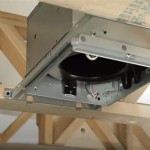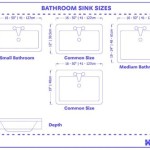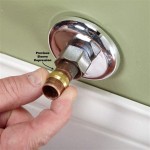How to Repair a Leaking Kohler Bathroom Faucet
A leaking bathroom faucet is a common household problem that can lead to wasted water, increased water bills, and potential damage to the surrounding area. Kohler faucets, while known for their quality and design, are not immune to leaks. Repairing a leaking Kohler bathroom faucet is often a manageable task for homeowners with basic plumbing knowledge and tools. This article provides a detailed guide on how to diagnose and repair various types of leaks in Kohler bathroom faucets.
Before commencing any repair work, it is crucial to gather the necessary tools and materials. The specific tools required will vary depending on the faucet model and the nature of the leak. However, a general list includes:
- Adjustable wrench
- Phillips head screwdriver
- Flathead screwdriver
- Allen wrench set
- Pliers
- Penetrating oil
- Replacement parts (O-rings, cartridges, valve seats, etc.)
- Clean cloths or rags
- Basin wrench (optional, for hard-to-reach areas)
- Plumber's grease
Prior to beginning any repair, the water supply to the faucet must be shut off. Locate the shut-off valves under the sink, typically one for hot water and one for cold water. Turn the valves clockwise until they are completely closed. After shutting off the water, turn on the faucet to relieve any remaining pressure in the lines. Place a bucket under the faucet to catch any residual water.
Identifying the Source of the Leak
The first step in repairing a leaking Kohler bathroom faucet is to identify the source of the leak. Kohler faucets come in various styles, including single-handle, two-handle, and widespread models. The location of the leak can provide clues as to which component is failing.
Common leak locations and their potential causes include:
Around the base of the faucet:
This often indicates a problem with the O-rings or seals that connect the faucet body to the sink.From the spout:
A dripping spout, even when the faucet is turned off, usually suggests a worn-out cartridge or valve seat.Around the handle:
Leaks around the handle typically point to worn O-rings or seals within the handle assembly.From the base of the handle:
Similar to leaks around the base of the faucet, this could be from worn O-rings or connections to the valve body.
Carefully examine the faucet while it is running to pinpoint the exact location of the leak. Use a flashlight if necessary to get a better view. Once the leak's origin is identified, the appropriate repair procedure can be determined.
Replacing O-Rings and Seals
O-rings and seals are common culprits in faucet leaks. They are typically made of rubber or silicone and can deteriorate over time due to exposure to water, minerals, and temperature fluctuations. Replacing worn O-rings and seals is a relatively straightforward repair that can often resolve leaks around the base of the faucet, handle, or spout.
To replace O-rings, follow these general steps:
Disassemble the Faucet:
Consult the faucet's documentation or Kohler's website for specific disassembly instructions. Generally, this involves removing the handle, spout, and any decorative trim pieces.Locate the O-Rings:
Identify the O-rings that need to be replaced. They are usually located on the faucet body, spout, or handle stem.Remove the Old O-Rings:
Carefully remove the old O-rings using a small screwdriver or pick. Be careful not to scratch the surrounding surfaces.Clean the Grooves:
Clean the grooves where the O-rings sit to remove any debris or mineral buildup.Install the New O-Rings:
Lubricate the new O-rings with plumber's grease and carefully install them into the grooves. Ensure they are properly seated.Reassemble the Faucet:
Reassemble the faucet in the reverse order of disassembly.Test for Leaks:
Turn the water supply back on and check for leaks. If the leak persists, double-check that the O-rings are properly installed and that all connections are tight.
It is important to use the correct size and type of O-rings for your specific Kohler faucet model. Refer to the faucet's parts diagram or Kohler's customer service for assistance in identifying the correct replacement parts.
Replacing the Cartridge
A dripping spout, even when the faucet is turned off, often indicates a worn cartridge. The cartridge is the valve mechanism that controls the flow of water. Over time, the internal components of the cartridge can wear out, allowing water to leak through. Replacing the cartridge is a common repair for single-handle and some two-handle faucets.
To replace the cartridge, follow these general steps:
Remove the Handle:
Remove the handle by loosening the set screw or unscrewing the handle cap.Remove the Cartridge Retaining Clip:
Locate the cartridge retaining clip, which holds the cartridge in place. Use pliers or a screwdriver to remove the clip.Remove the Old Cartridge:
Carefully pull the old cartridge straight up and out of the faucet body. It may be necessary to use pliers to grip the cartridge if it is stuck.Clean the Cartridge Chamber:
Clean the cartridge chamber to remove any debris or mineral buildup.Install the New Cartridge:
Align the new cartridge with the faucet body and gently push it into place. Make sure the cartridge is fully seated.Reinstall the Cartridge Retaining Clip:
Reinstall the cartridge retaining clip to secure the new cartridge.Reinstall the Handle:
Reinstall the handle and tighten the set screw or screw on the handle cap.Test for Leaks:
Turn the water supply back on and check for leaks. If the leak persists, double-check that the cartridge is properly installed and that the retaining clip is secure.
It is essential to use the correct replacement cartridge for your specific Kohler faucet model. Kohler cartridges are often model-specific, and using the wrong cartridge can result in leaks or improper faucet operation. Refer to the faucet's parts diagram or Kohler's customer service for assistance in identifying the correct replacement cartridge.
Some Kohler faucets may utilize ceramic disc cartridges. These cartridges are more durable than traditional rubber cartridges but can still fail over time. The replacement process for ceramic disc cartridges is similar to that of standard cartridges.
Addressing Leaks from Valve Seats
In some two-handle faucets, the leak might originate from the valve seats. The valve seat is the surface against which the faucet's valve stem seals when the faucet is turned off. Over time, the valve seat can become corroded or damaged, preventing a proper seal and leading to leaks.
Repairing or replacing valve seats can be more complex than replacing O-rings or cartridges. Depending on the faucet model and the severity of the damage, the valve seat may need to be cleaned, lapped, or replaced entirely.
To address leaks from valve seats, consider the following steps:
Disassemble the Faucet:
Disassemble the faucet to access the valve seats. This usually involves removing the handles, stems, and any decorative trim pieces.Inspect the Valve Seats:
Carefully inspect the valve seats for corrosion, damage, or mineral buildup.Clean the Valve Seats:
Use a valve seat wrench or a specialized valve seat cleaning tool to clean the valve seats. Remove any debris or mineral buildup.Lap the Valve Seats (Optional):
If the valve seats are slightly damaged, they may be lapped to create a smoother sealing surface. Use a valve seat lapping tool and lapping compound to gently grind the valve seats.Replace the Valve Seats (If Necessary):
If the valve seats are severely damaged, they may need to be replaced entirely. Use a valve seat wrench to remove the old valve seats and install new ones. Ensure the new valve seats are properly seated and tightened.Reassemble the Faucet:
Reassemble the faucet in the reverse order of disassembly.Test for Leaks:
Turn the water supply back on and check for leaks. If the leak persists, re-examine the valve seats and ensure they are properly cleaned, lapped, or replaced.
Repairing or replacing valve seats can be challenging and may require specialized tools and knowledge. If you are not comfortable performing this repair, it is best to consult a qualified plumber.
When working with valve seats, it is also crucial to inspect and replace the valve stems. The valve stem is the part that screws into the valve seat and controls the flow of water. A worn valve stem can also contribute to leaks.
In conclusion, repairing a leaking Kohler bathroom faucet involves diagnosing the source of the leak and replacing the affected components. Common repairs include replacing O-rings and seals, cartridges, and valve seats. It is important to use the correct replacement parts for your specific Kohler faucet model and to follow the manufacturer's instructions carefully. If you are not comfortable performing any of these repairs, it is best to consult a qualified plumber.

How To Fix Leaky Bathroom Faucet Kohler Two Handle

Solved Fixed Leaking Kohler Tap Faucet

How To Fix A Leaky Faucet Single Handle By Kohler Best Plumbing 206 633 1700

Kohler Faucet Leak Repair

Kohler Faucet Leak Repair

Fix A Leaking Single Handle Bathtub Faucet Kohler Repair

Kohler Kitchen Faucet Repair In 10 Steps

Kohler Faucet Leak Repair

How To Fix Leaky Kohler Kitchen Faucet Infinity

How To Fix Kohler Shower Leaking Not Getting Hot Or Low Pressure
Related Posts







